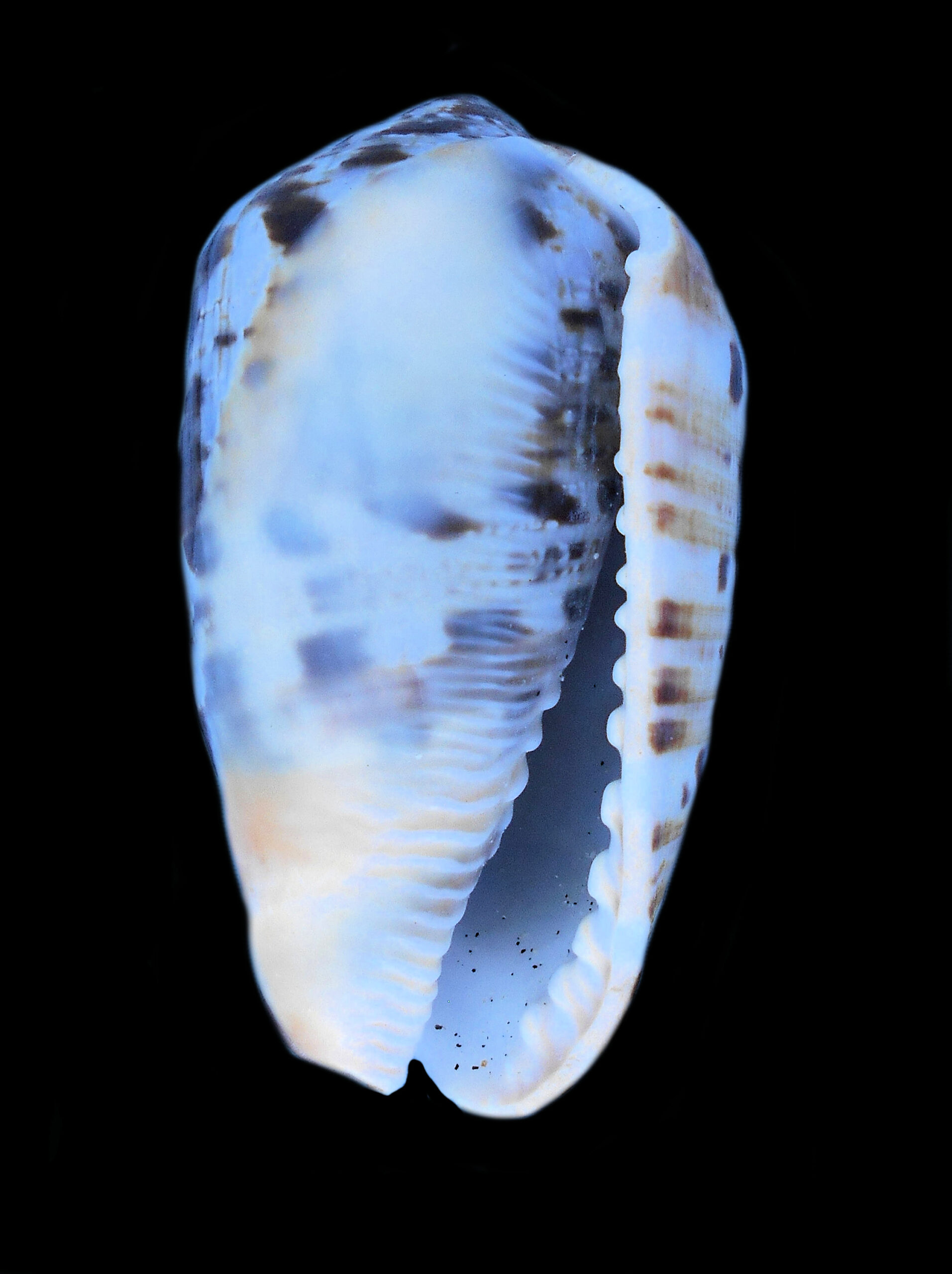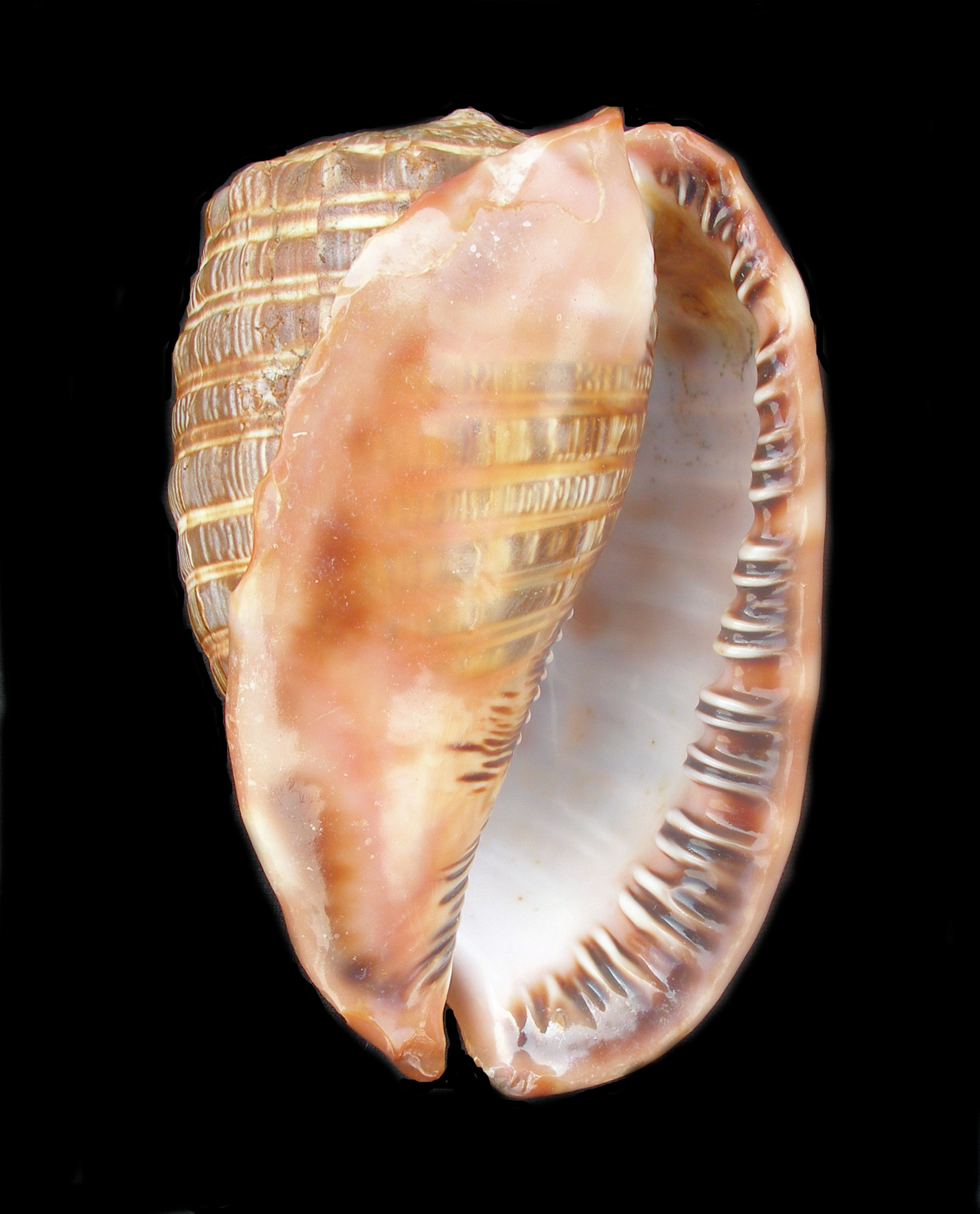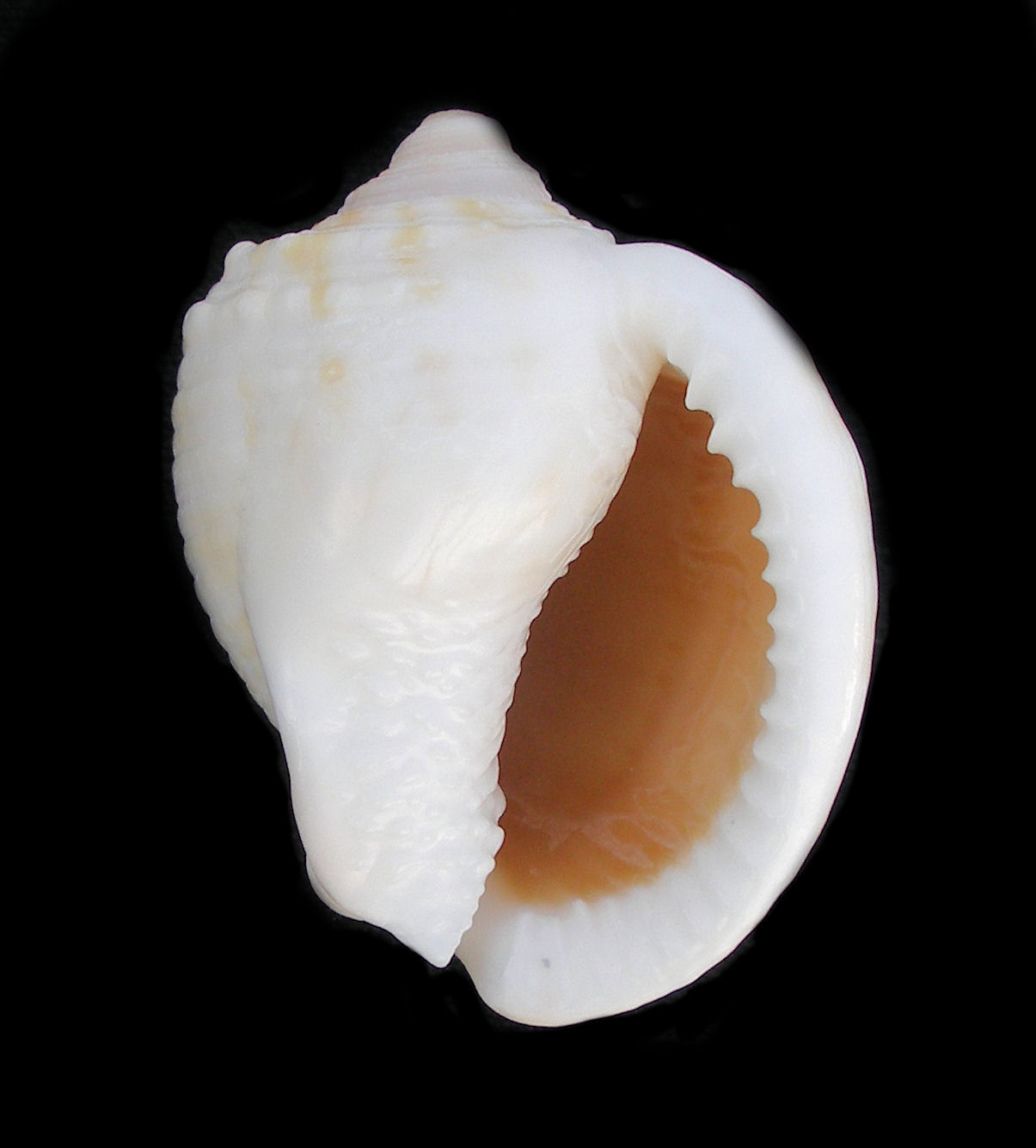The Helmet Shells are members of the Cassidae Family and include the Bonnet and Helmet Shells. They are medium to large, thick, heavy shells that can be egg to pear shaped. They have a large body whorl, which is often sculpted with knobs or axial ribs, a flat or low spire, and an aperture that is elongated and only moderately wide with dentition (“teeth”) and ends in a curved siphonal canal. The Helmet Shells have thick and recurved outer lips, like the rim of a helmet and a large foot and mantle.
Helmet Shells are found intertidally to depths that exceed 1,000 m (3,300 feet). They bury themselves in sand substrate during the day and emerge at night at predators feeding on echinoderms, such as sea stars and sea urchins. The use their heavy shells to pin prey in place, envelope the prey with their foot and mantle and then excrete an enzyme that paralyzes the animal. With urchins, they use their radula to penetrate the urchins test and then secrete toxins. In turn smaller Helmets are preyed upon by crabs, fish, and predatory mollusks. They are found worldwide, in tropical and subtropical seas. There are eighty global members of the Cassidae Family of which four species are found along the coasts of the Baja. Helmet Shells have been used since the 1500’s to make of cameo jewelry.


